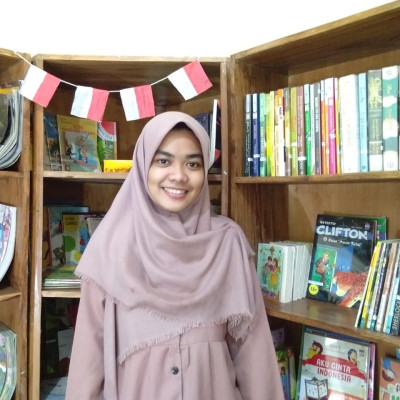Sessions / Younger Learners
Embracing pleasure reading: kickstarting post-COVID-19 literacy recovery #3716
It is rare to hear a conversation about COVID-19 that does not include the phrase "unprecedented event.” However, by examining past disasters—specifically, ones affecting young learners—we may establish a precedent for recovery. In August 2005, the Caribbean and gulf coast regions were hammered by Hurricane Katrina. Over one million people were displaced, and thousands of children had their education interrupted during critical early learning and development stages. The educational interruptions and recovery process led to students falling behind their unaffected peers by as much as a year. COVID-19 is already showing similar impacts on student development, especially language acquisition, development, and reading. Nevertheless, a multi-faceted, extensive reading program that incorporates support for classrooms, homes, and special reading events can combat the widening literacy gap exacerbated by the years of pandemic lockdowns and slow recovery.
How can ER teachers improve reluctant readers' reading skill? #3861
As an ER teacher, I often see poor readers in my reading classes. Some learn and develop their reading skills by way of reading multiple books, but it’s also common to spot slow or reluctant learners of English in ER class. Their reading level doesn't change over time or sometimes it seems regressive. Their typical reading trait is they do not bother to learn unknown words or phrases; they are just skimming through a book without adequately understanding it. Over many years of ER teaching experience, the presenter tried to find a solution to fix the problem. The presenter wants students to get over their reading hurdles, bringing back on the virtuous reading cycle. What the presenter found effective for those learners is dropping their reading level, by using Level Down Reading (LDR). Teachers arbitrarily lower the reading level of the student in trouble with reading. LDR is implemented if necessary at some intervals until the student reaches to the point where they can get over her reading hurdles. This presentation is based on the observation of young Korean learners of English who learn English through extensive and intensive reading. It tries to give some insight to ER teachers who have trouble with reluctant learners. It also demonstrates how LDR works with poor readers and makes them to be more confident and better readers.
Workshop for Kids in Extensive Reading and Extensive Listening #3877
This workshop aims to demonstrate particular ways children can learn English through extensive reading and listening. As Dr. David Hill mentioned in the first ERWC, language cannot be effectively learned without going through ER and EL. The learning process can be expedited by using a variety of techniques in both ER and EL. These techniques are especially important for young beginner learners with shorter attention spans. This workshop shows how making story-maps, and, collaterally, illustrating flashcards, playing word games and solving word puzzles, with accompanying reading-aloud presentations, make the learning process easier for the learners because it involves the use of senses, physical actions, and play. In this workshop, participants will have the opportunity to create story-maps with Dr. Park, and flash cards and related items with Dr. Takase, and practice how to use them effectively.
Cancelled Apacin learning model for elementary school digital pictorial storybooks #3845
Children's storybooks can be considered an important resource for reading comprehension. Digital Pictorial Storybook can facilitate and help students with reading comprehension. The combination of colors and image visualization adds to the reading experience of elementary school students because it is fun and easy to understand. In addition, the Apacin learning model can build critical thinking, creative thinking, and reflective thinking. The Apacin model is an acronym for learning syntax, observing, thinking, analyzing, creating, and informing. The model used in this research is Analysis, Design, Development, Implementation, Evaluation (ADDIE ) based on the Apacin learning model. The results of this study are in the form of digital pictorial storybook media based on the Apacin learning model and can help elementary school students' reading comprehension. This study used questionnaires, interviews, and observations. Respondents were media and materials experts, students, and teachers. The data was processed qualitatively and quantitatively, and the data from teachers was processed using the Unified Theory of Acceptance using the od Technology (UTAUT) model. Based on the results of media and material experts, the average value is equivalent to 93.8% and the average value of material experts is equivalent to 93.2%, so it can be concluded that the digital pictorial storybook media design based on the Apacin learning model is very feasible and can be used in the learning process of reading comprehension of elementary school students.
The Design of an ER program applying gamification for Korean young learners #3771
This study explores the design of a gamified extensive reading (ER) program to improve English reading accuracy and fluency in elementary learners within an English as a foreign language (EFL) context. Recognizing that traditional ER programs may not cater to the short attention spans of primary students, the researchers propose using gamification, a technique that integrates game elements into non-game contexts (Deterding et al., 2011), to create engaging and meaningful language learning experiences. The gamified ER program includes game mechanics such as challenges, levels, points, leaderboards, and missions to emphasize intrinsic motivation. The study demonstrates the program's effectiveness through student surveys and teacher observation journals, highlighting increased student immersion, reading accuracy, and fluency. The gamified ER design can be adapted for various age groups and reading levels and can be used in close reading classes. The researchers will also provide a checklist and resources for implementing the program.
Cancelled A four-step reading method to do ER outside the classroom in China #3789
Doing extensive reading outside the classroom for L2 learners, especially younger learners, is not easy. When we practice an extensive reading program in China, we use four-step reading method to help Chinese families and teachers. The first step is similar to picture walk. We invite children to choose the book and read some pictures quickly in the book. The next step is to listen to a bilingual- audio. Teachers will read each book to children in detail in both Chinese and English. After that, students listen to the audio in English and read the book again. They also do 30 minutes of extensive listening every day. With the four-step reading method, we help over 200 families start to do ER at home. More and more parents and children are now joining in our ER program. Now they feel much easier to do ER at home. Because they just need to buy the books, download an app and then follow the teachers,their children can read more than 200 books by following the four-step method each year.
Authentic projects to increase student motivation and autonomy in ER class #3842
Adolescence is a phase where rapid physical growth with intense hormonal activity takes place. It may lead to diminishing energy to concentrate in academic works. Therefore, even though structured academic learning is difficult to overcome, collaborative works and peer-interaction which enable them to explore their future-role in the society are of their interest. On the other hand, extensive reading activities tend to be individual which are not in line with adolescence’s characteristics. Thus, we conducted authentic projects to bridge it. The project was conducted in a private junior high school in Yogyakarta. A group of 15 middle-grade students aged 12-15 years old participated for 7 months duration. They’ve performed several group-chosen authentic projects, such as: book-procurement, performance, and social-media project. This presentation would also discuss about the success, obstacles, achievement, student’s point of view, and our analysis on its effectiveness. The data are collected and analyzed qualitatively.
Cancelled Setting up a well-balanced intensive reading and extensive reading program #3787
In the past few years, intensive learning has taken up almost all the time in Chinese English courses. This involves intensive reading, doing lots of exercises, the study of grammar, spelling and pronunciation, etc. Extensive reading and listening made up little time in English courses. As a result, lots of Chinese learners have learned English for many years, but they still cannot speak or read English fluently. Based on this situation, we set up a well-balanced reading program that combines both intensive and extensive reading. This presentation will also show why it is important to combine intensive reading and extensive reading in English, and how to set up a more effective English reading program. In the past few years, this reading program has been implemented in multiple schools, and hundreds of students have made significant progress, and we affirm that English learning must be combined with intensive reading and extensive reading.
A longitudinal study of Japanese learners who continued extensive reading #3824
This paper reports a longitudinal study that observed Japanese learners in a long-term extensive reading program. Participants were eight students who continued extensive reading throughout their elementary to senior high school years. Observation periods varied between learners: they started reading between pre-school and 4th grade and ended in 11th to 12th grade. Analysis used participants’ reading history corpus and reading and teaching records which included titles of books read, how they read, notable events, learners’ comments, and teacher’s observations. Corpus analysis revealed that both reading amount (running words) and lexical input (word types) commonly increased rapidly from 7th to 9th grade. Three major phases were observed in the transition of book selection, which were partially divergent according to individual learning motivation, reading preference, and reading ability. Participants' learning motivations were found to have shifted from extrinsic toward intrinsic regulation, with some individual differences.
Cancelled Using advertisements in learning English in EFL classroom #3781
Advertising is one of the most effective and efficient forms of outbound media. Teaching extended reading via advertisements is one of the ways to improve students' reading skills. It is a fact that advertisements are usually incomplete information containing words, phrases, derivations and even symbols. However, advertisements do not have well- grammatical structures, they contain data which carries meaning. This study attempts to provide advertisements’ benefits for students reading skill. While using advertisements, the author gave a model to the learners to transfer the data in the advertisements into a complete non- extract information. The researcher used experimental method to evaluate students’ learning results in speaking and writing skills. A pre-test, post-test and a survey were collected from two classes (Experiment class and control class) to determine how the implementation of the techniques impacted on students’ learning results. The results showed that the use of advertisements brought positive changes in students’ language competences.













